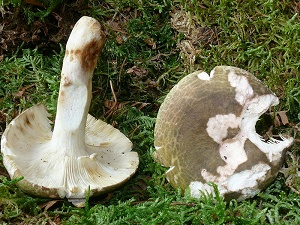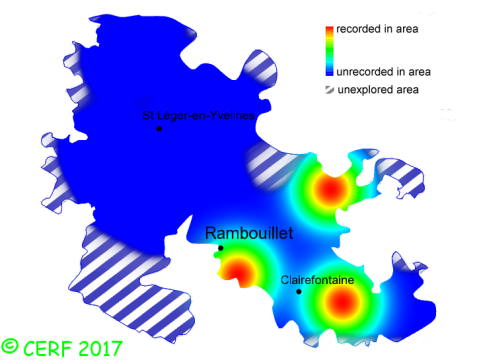| Russula cutefracta Cooke |
|
|
|
|
|
|
The cap is violaceous or olive green. The cap surface is smooth, not viscid nor sticky. The flesh is unchanging; its taste is mild; its texture is grainy (breaking like a chalk stick). The gills are free, crowded . The spore print is whitish. This species is mycorrhizal. It grows on the ground, under broad-leaved trees, with oak, chestnut. The fruiting period takes place from July to November.
Chemical tests : faint or no reaction to iron sulphate; positive reaction to Ga´ac (blue);. Distinctive features : cracked cap at margin; flesh with mild taste; flexible, not brittle, gills; no colour change when in contact with iron sulphate; only with deciduous trees Russula cutefracta is quite rare and localised in the forest of Rambouillet, and is quite rare, more generally speaking . | ||
|
page updated on 14/01/18

